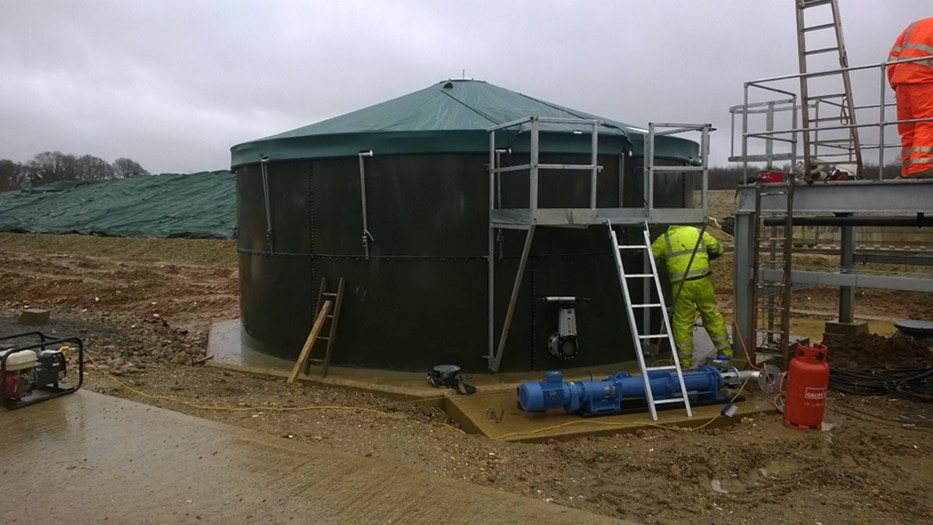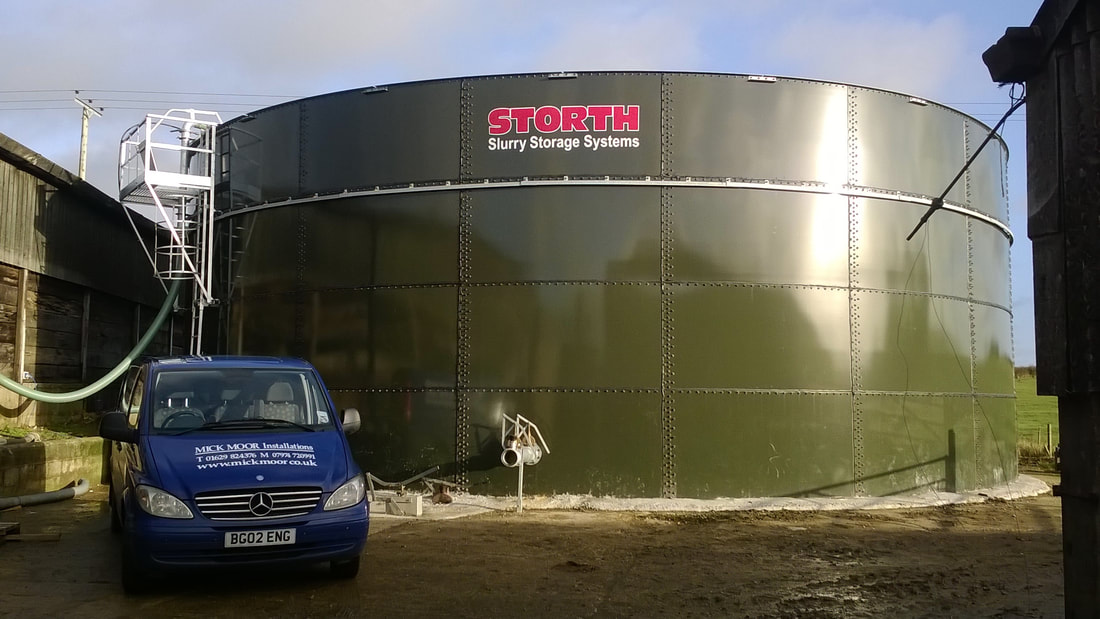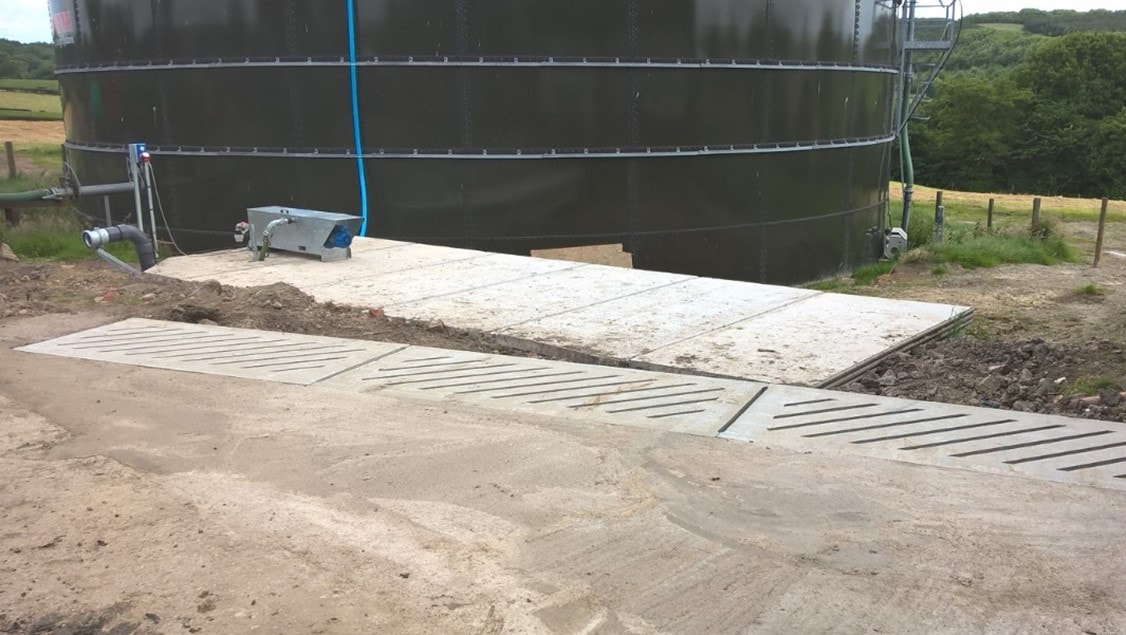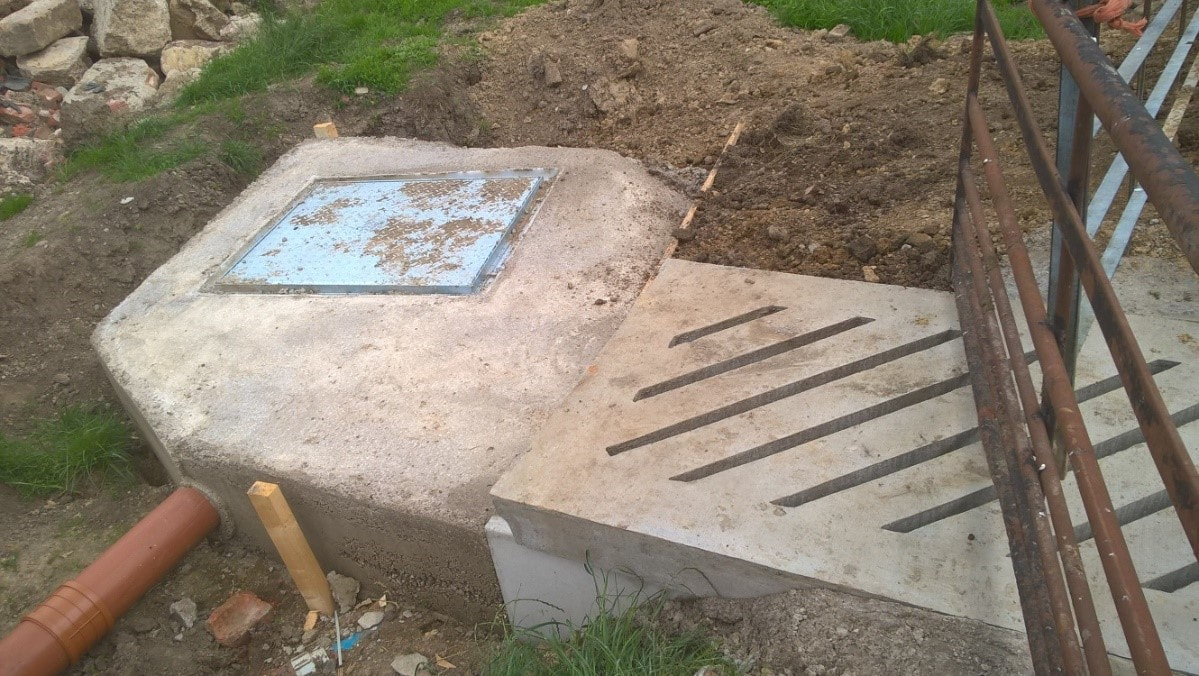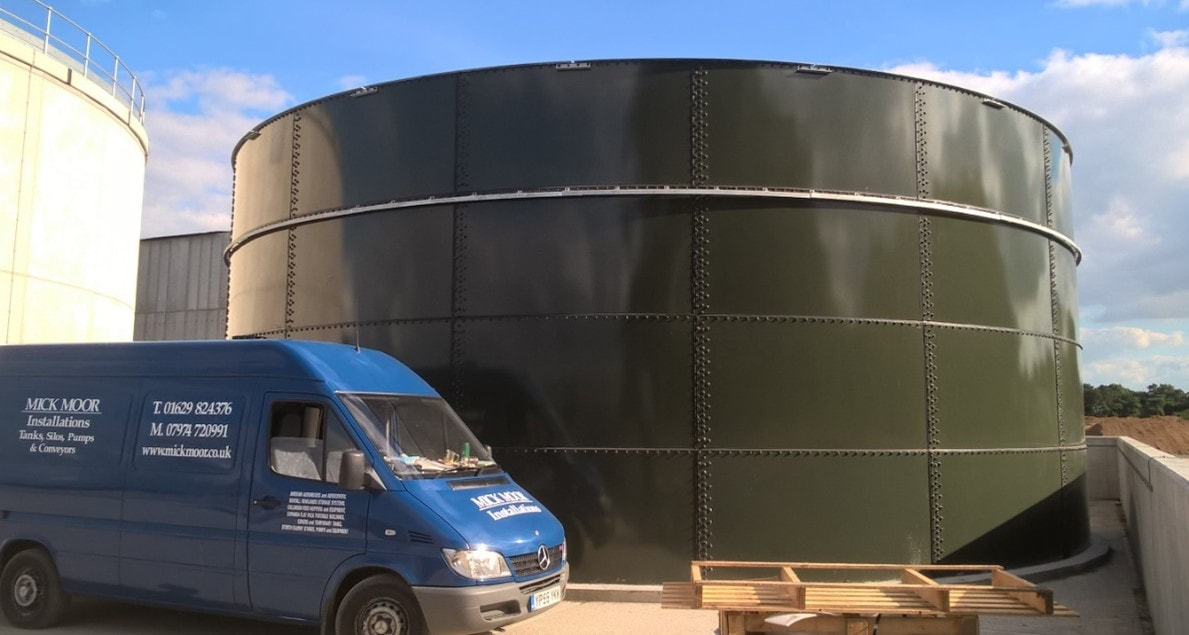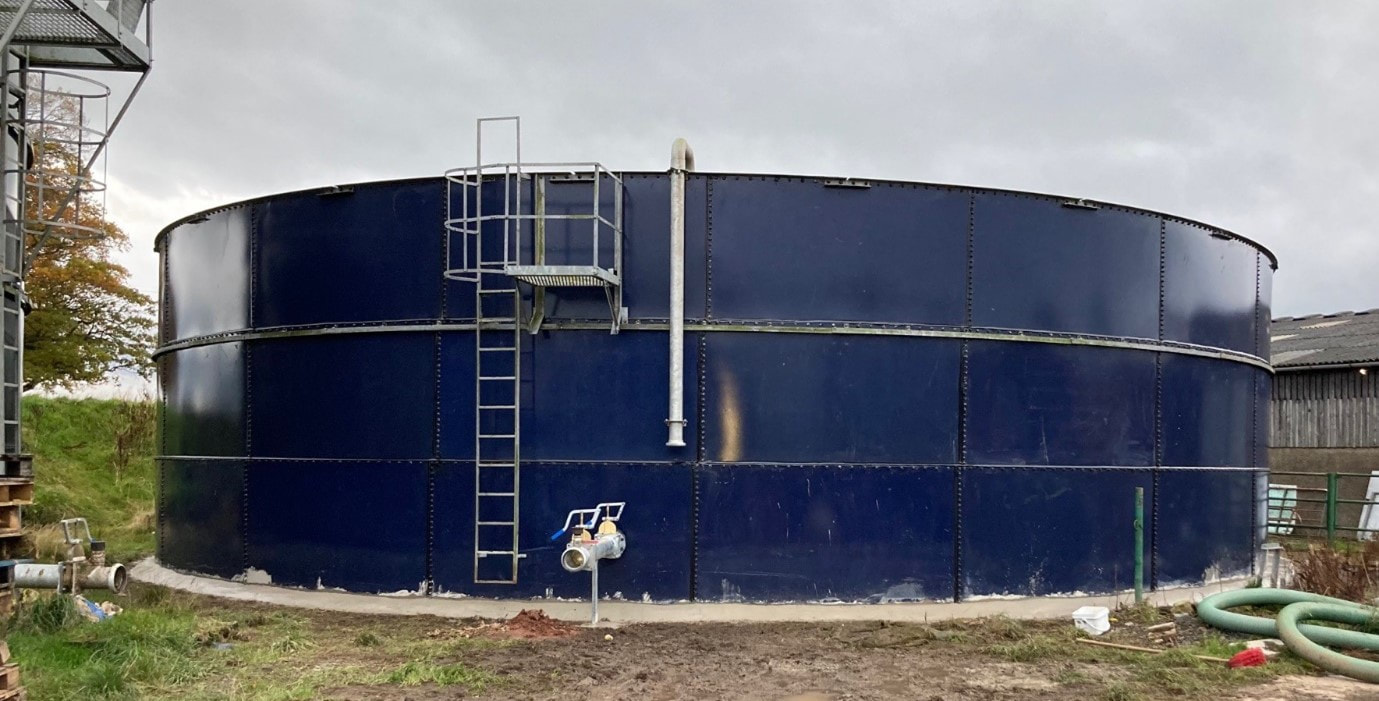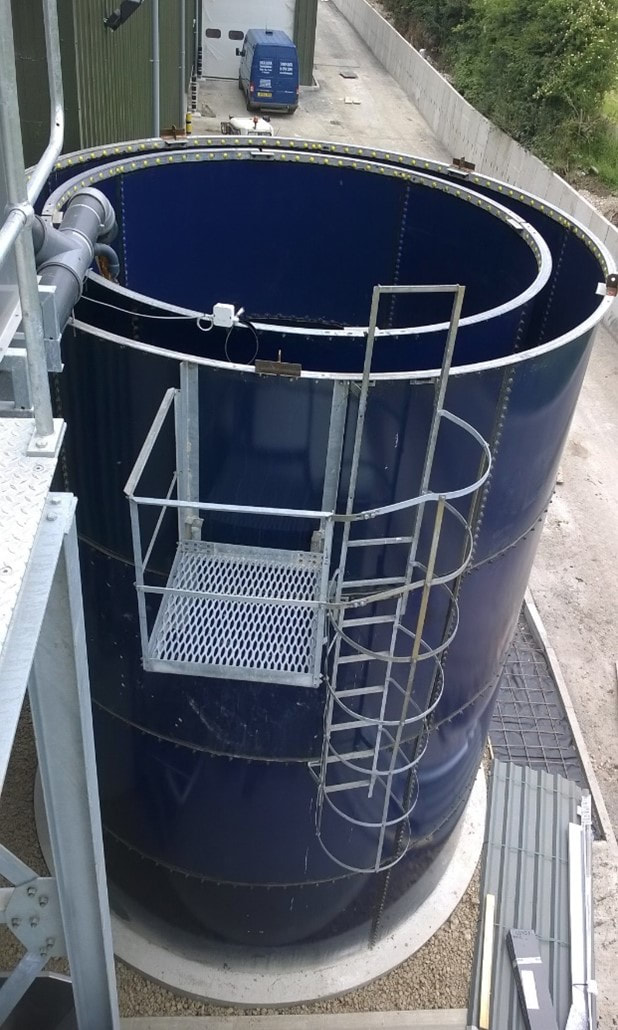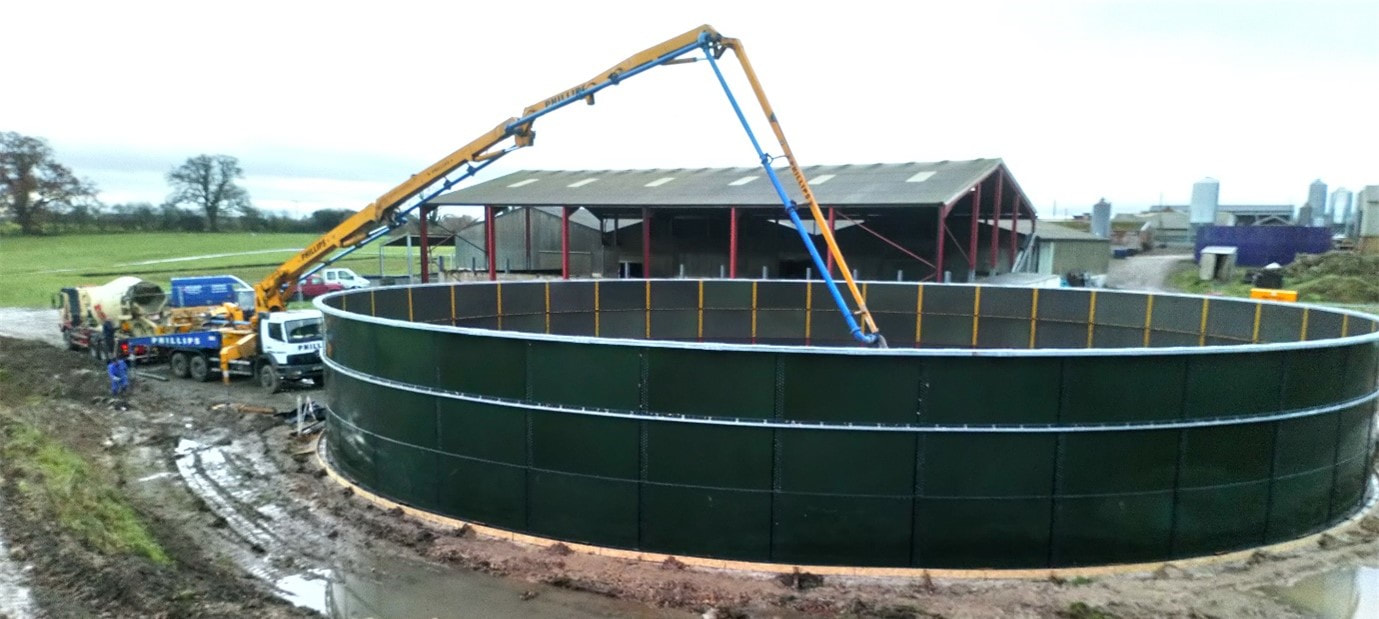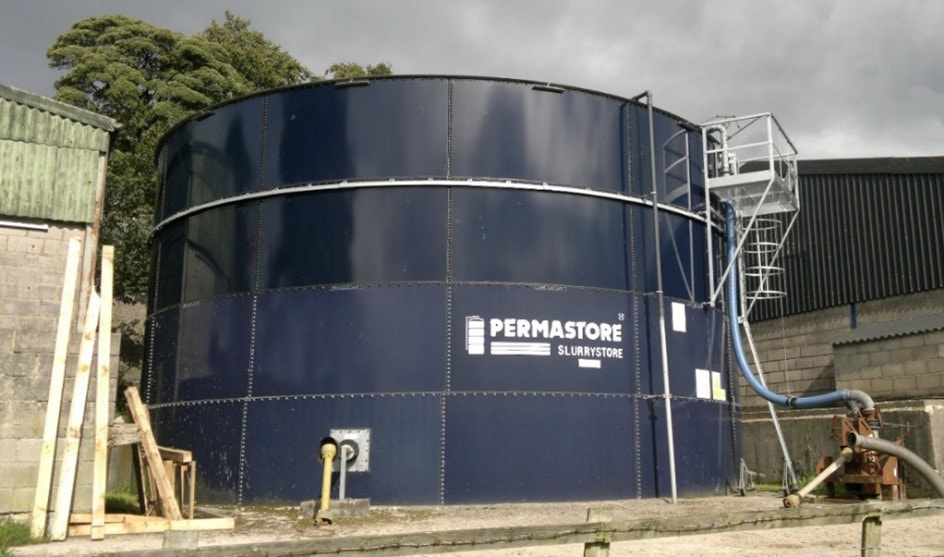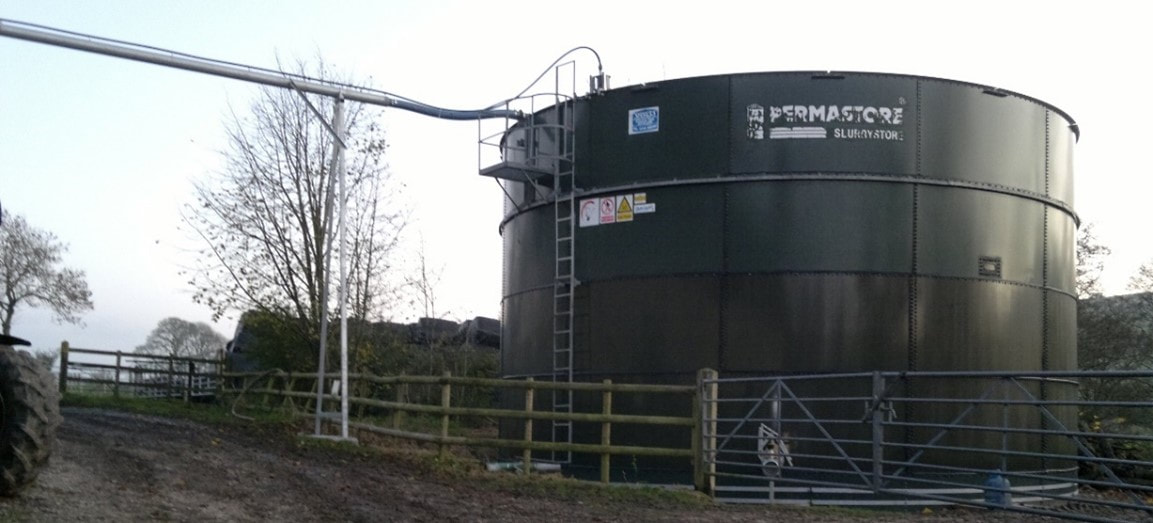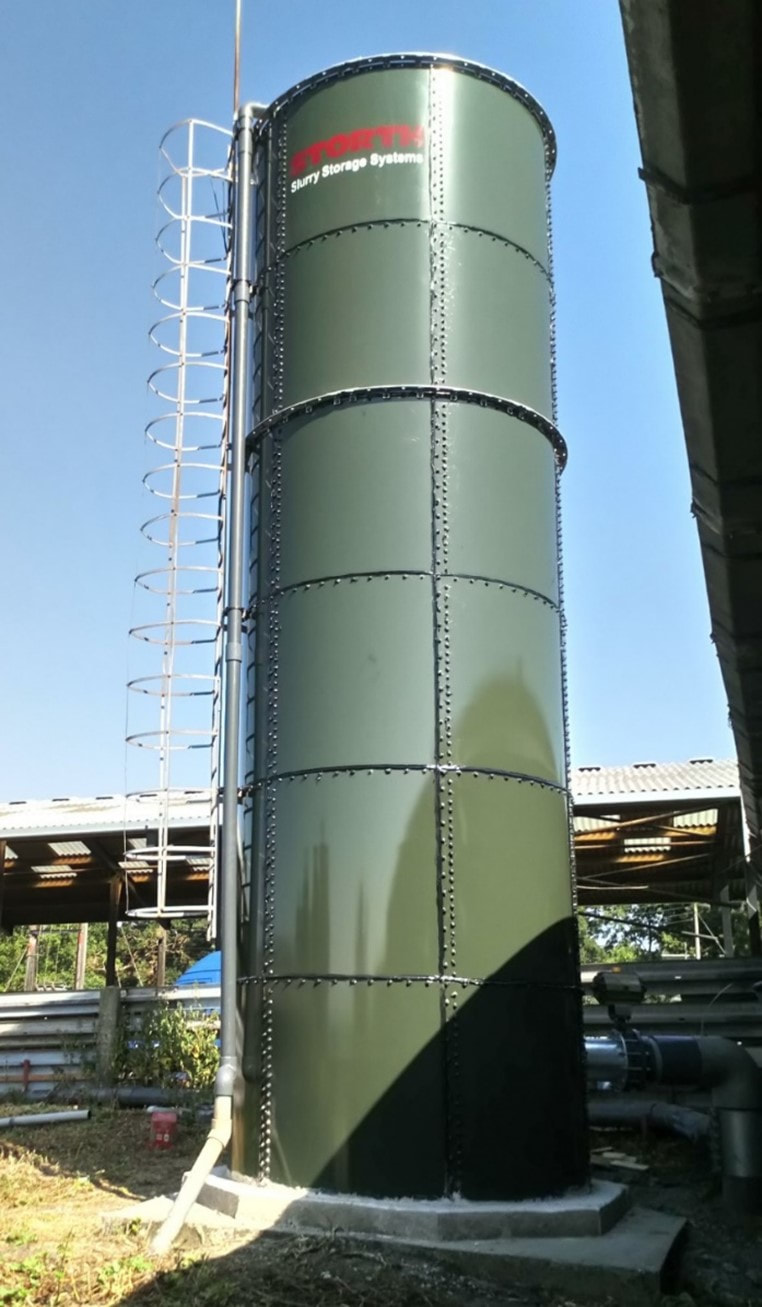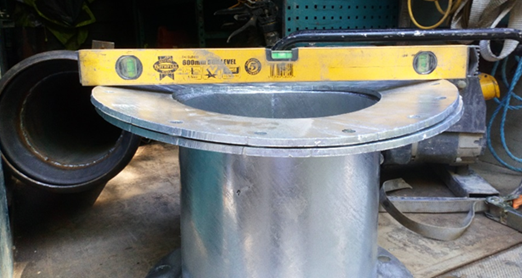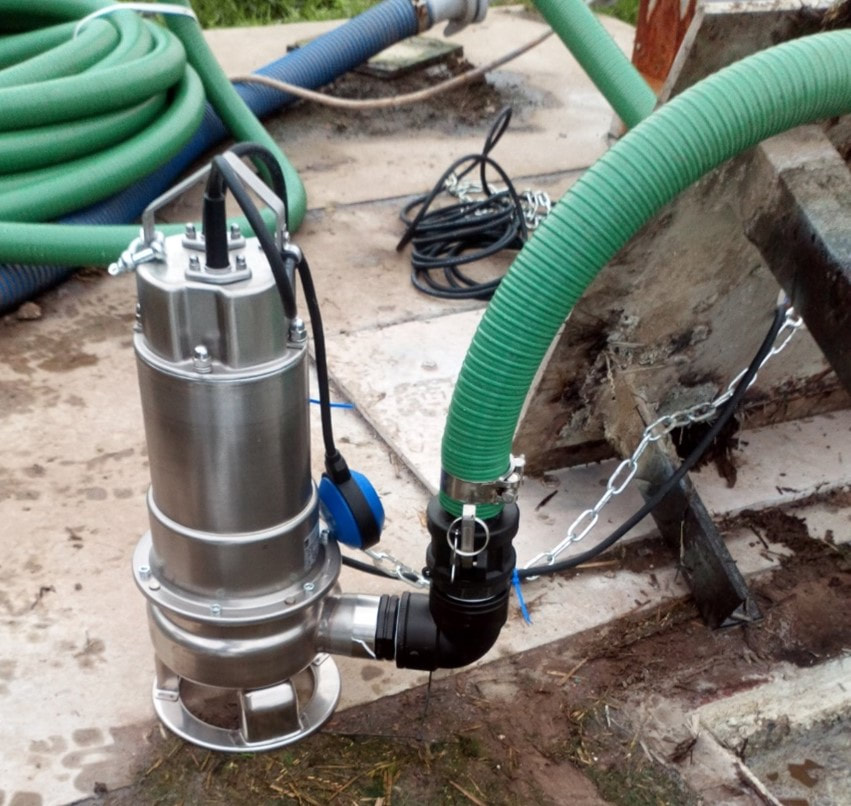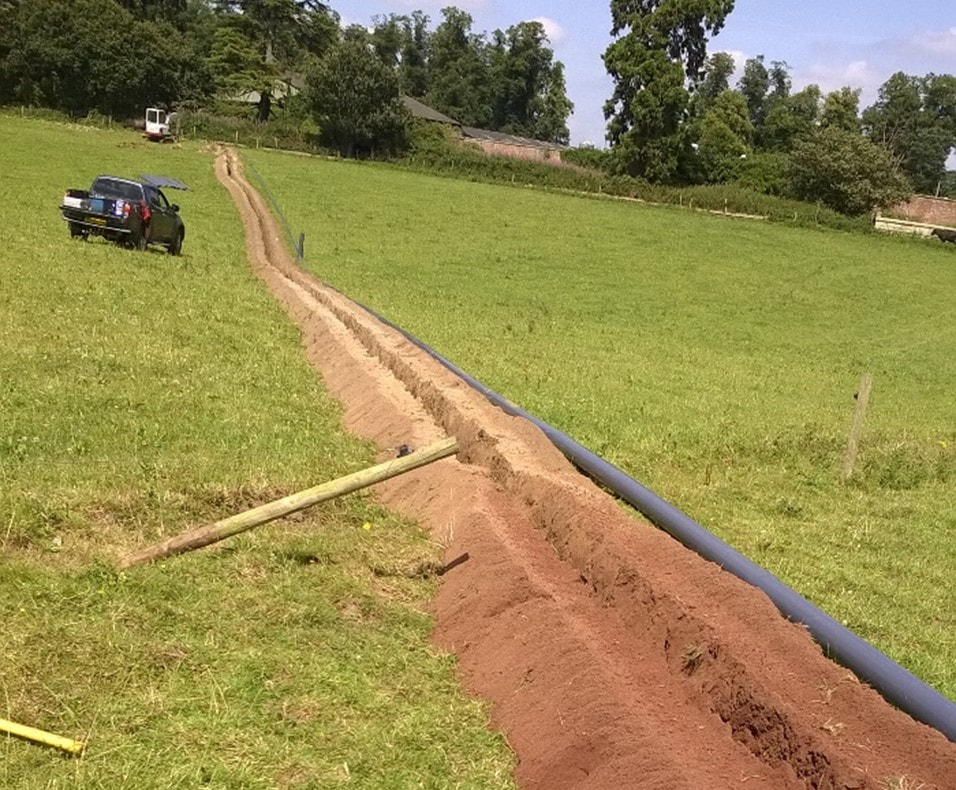Slurry & Waste Storage
Although I concentrate on the agricultural sector, I carry out all kinds of installations for the storage and handling of liquid waste, from a simple submersible pump, recommended to suit your requirements, to a full installation incorporating collection, pumping, storing, mixing and disposal, of up to 5,000 cubic metres and more!
As well as farm slurry, recent projects include digestate from an AD plant and industrial liquid waste. All the tanks I supply are designed for the liquid they will contain. The design life is at least 25 years, but they should last considerably longer, with regular maintenance. They can be designed to contain liquids with a wide range of pH; standard tanks will hold liquids with a pH from 3-9, Premium tanks from 2-11, and Premium Plus from pH 1-14. Temperature can affect the corrosive nature of these liquids, and so any variation from ambient needs to be designed in too.
The Environment Agency ask for notification of any major alterations to any farm slurry store and I can liaise with them on your behalf. They are also looking at ways to reduce ammonia emissions; this, as far as they are concerned, could mean a roof. As a result, all new tanks I supply are “Roof Ready”. Slightly more costly initially but avoiding the considerable expense of converting a tank not designed for the additional stresses from a cover.
A cover fitted to a small tank at an AD site. This receives warm digestate from the pasteuriser
As well as farm slurry, recent projects include digestate from an AD plant and industrial liquid waste. All the tanks I supply are designed for the liquid they will contain. The design life is at least 25 years, but they should last considerably longer, with regular maintenance. They can be designed to contain liquids with a wide range of pH; standard tanks will hold liquids with a pH from 3-9, Premium tanks from 2-11, and Premium Plus from pH 1-14. Temperature can affect the corrosive nature of these liquids, and so any variation from ambient needs to be designed in too.
The Environment Agency ask for notification of any major alterations to any farm slurry store and I can liaise with them on your behalf. They are also looking at ways to reduce ammonia emissions; this, as far as they are concerned, could mean a roof. As a result, all new tanks I supply are “Roof Ready”. Slightly more costly initially but avoiding the considerable expense of converting a tank not designed for the additional stresses from a cover.
A cover fitted to a small tank at an AD site. This receives warm digestate from the pasteuriser
A typical farm slurry store filled by a PTO driven pump through flexible and fixed pipework to a jetter mounted on the tan
Sometimes, ground conditions will be such that the soil bearing pressure needs to be tested, and a base for the slurry store specially designed.
Testing the bearing pressure for a proposed store beside the Humber Estuary.
Testing the bearing pressure for a proposed store beside the Humber Estuary.
A complete farm installation which we installed a few years ago. Slurry is collected from cattle housing and automatically pumped through an underground pipe by a float controlled electric pump into the large circular Storth tank, through the vertical pipe just visible on the right.
Dirty water off the track and yard is collected through the slat covered channel and, along with silage effluent drains into the covered below ground rectangular tank. Dairy washings and dirty water from the other end of the buildings are also pumped here.
Dirty water off the track and yard is collected through the slat covered channel and, along with silage effluent drains into the covered below ground rectangular tank. Dairy washings and dirty water from the other end of the buildings are also pumped here.
All this is emptied automatically and spread on the fields by a Briggs irrigator, supplied through underground pipes. The Briggs high pressure pump is in the galvanized box on top of this tank. The whole system is automatic, with frost protection and alarms for malfunction or blockage. If field conditions are too wet, the dirty water can be diverted into the Storth slurry store through the blue pipe, which strictly speaking should be black for slurry.
This is the pump chamber at the other end of the farm, below the manhole cover. Dairy and parlour washings enter through the red drain, and the slatted channel will collect run off from the yard.
This is the pump chamber at the other end of the farm, below the manhole cover. Dairy and parlour washings enter through the red drain, and the slatted channel will collect run off from the yard.
A new Storth store erected on the same base as the old Malgar tank it replaces. A sheet is left out of the second ring for access to complete the installation.
A bunded waste treatment installation of three similar tanks. Each has a net capacity of just under 3,000 cubic metres. Erected by the customer’s staff under my supervision.
A digestate store on an anaerobic digestion installation.
A very neat looking store made for selected used sheets, next to a new store we built the year before. It was intended to use the old Boythorpe tank alongside the new one, but close inspection deemed it unsafe, so to keep cost low a tank was built from the best sheets saved from two old tanks.
A bunded tank also made from used parts, for leachate from a composting site.
Pumping the concrete floor into a large slurry store.
Tank Extensions
Two rings added to the top of a suitable tank
An extension inserted above a starter ring by lifting the original two rings. The overhead filler pipe and support gantry was also fabricated.
A flood-wash tank. It was cheaper to use a new, purpose designed Storth tank than adapt a second-hand tank. The serviceable life will also be far longer.
A 12” flange designed to fit the small diameter of the flood wash tank. The flange and backing plate were rolled to the same radius as the tank to avoid stresses on the tank itself and drilled so that silo bolts could be used.
A Stainless-steel submersible pump prepared to pump leachate from a midden into a slurry store.
A 500+ metre, 160mm diameter PVC pipeline, to take slurry from reception pit to a lagoon.
Whatever problem your slurry is giving you, I am sure I can work out a cost-effective solution

